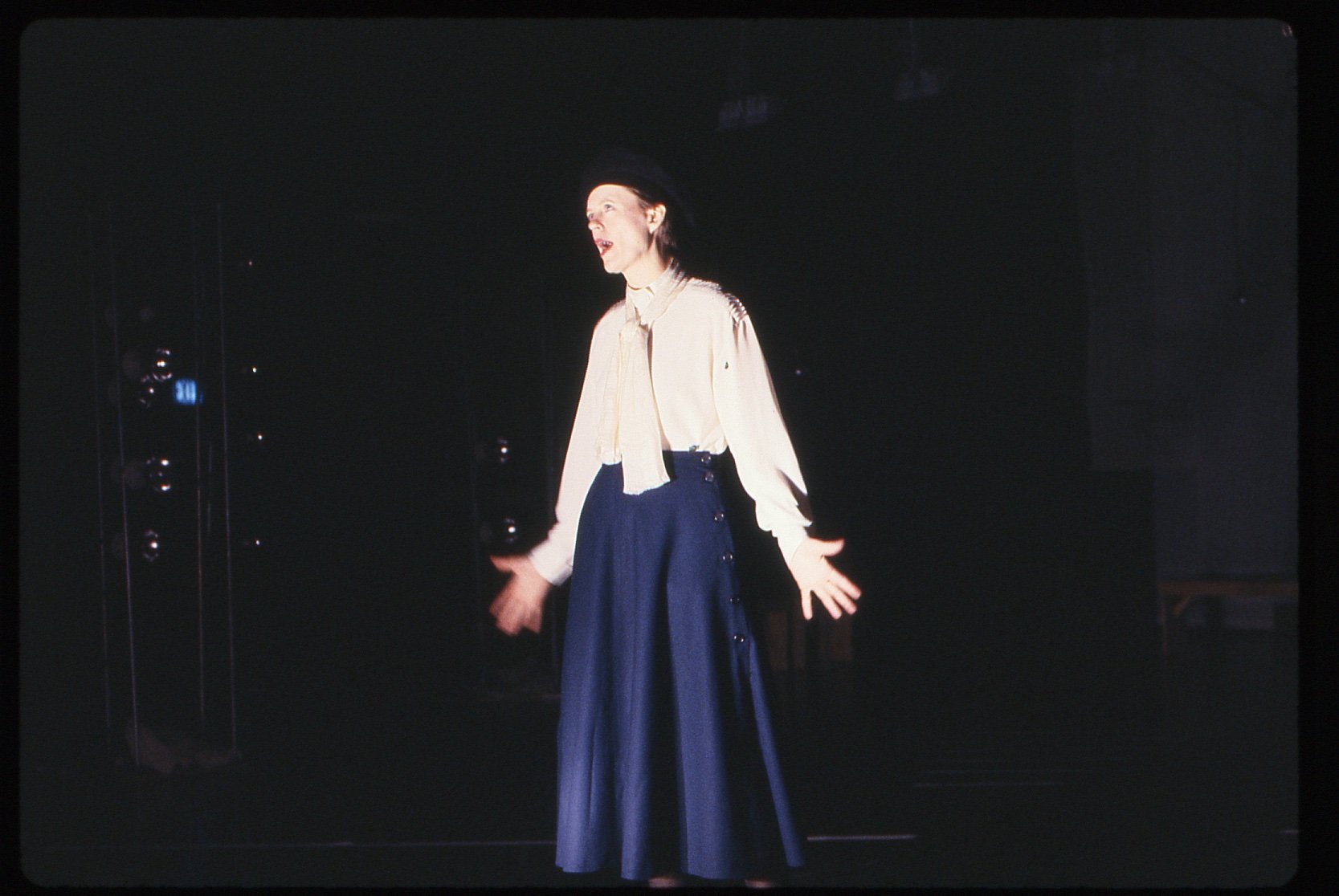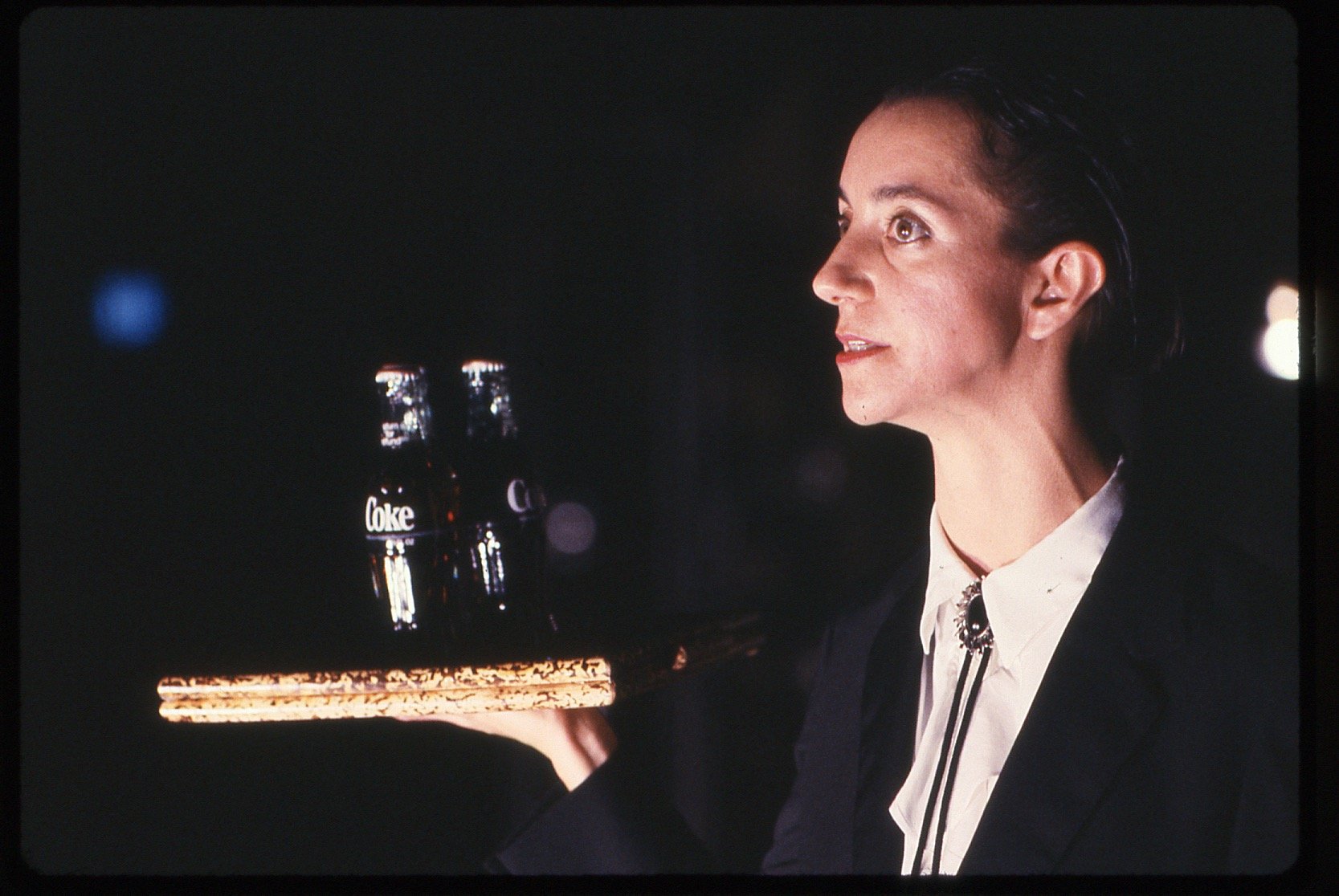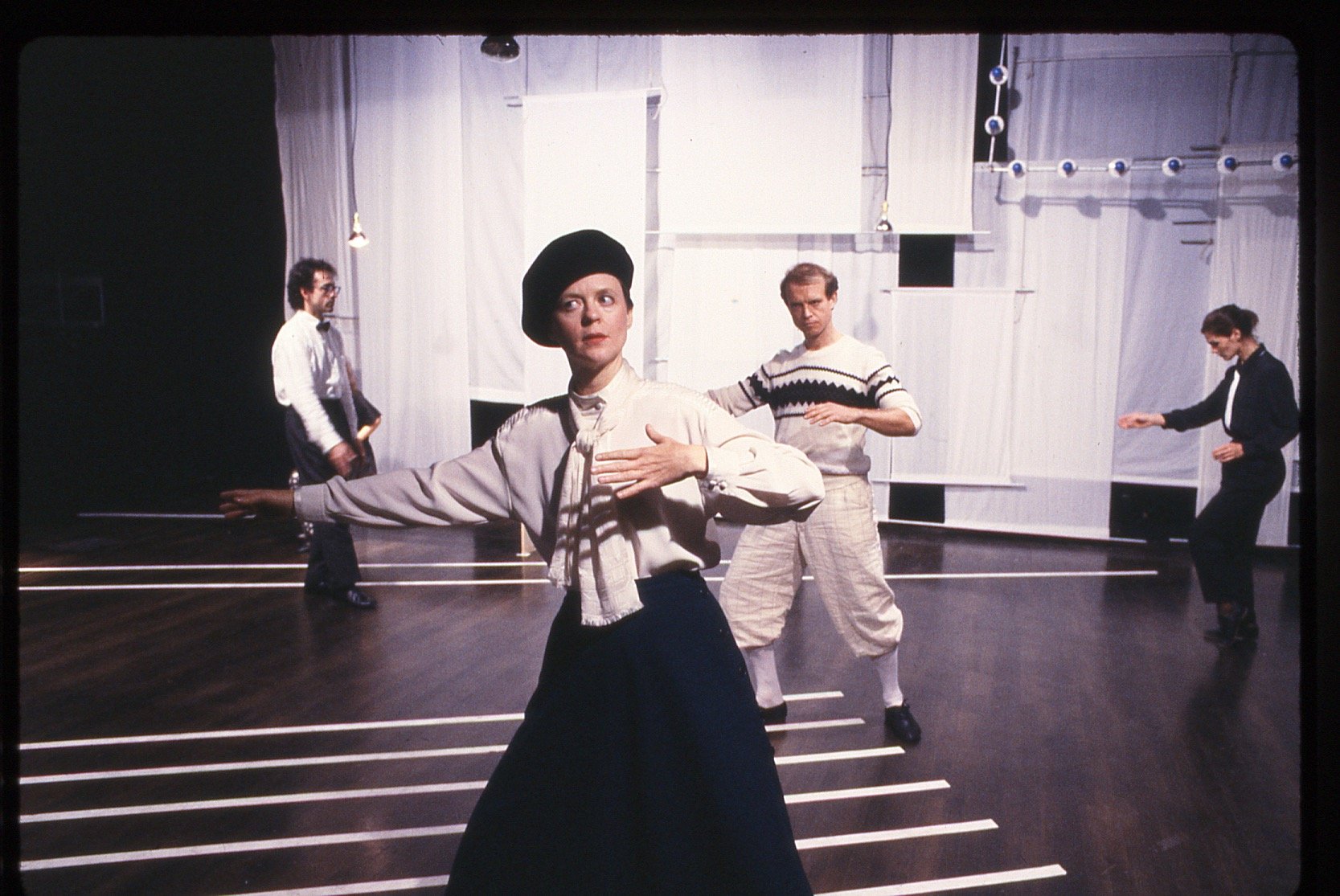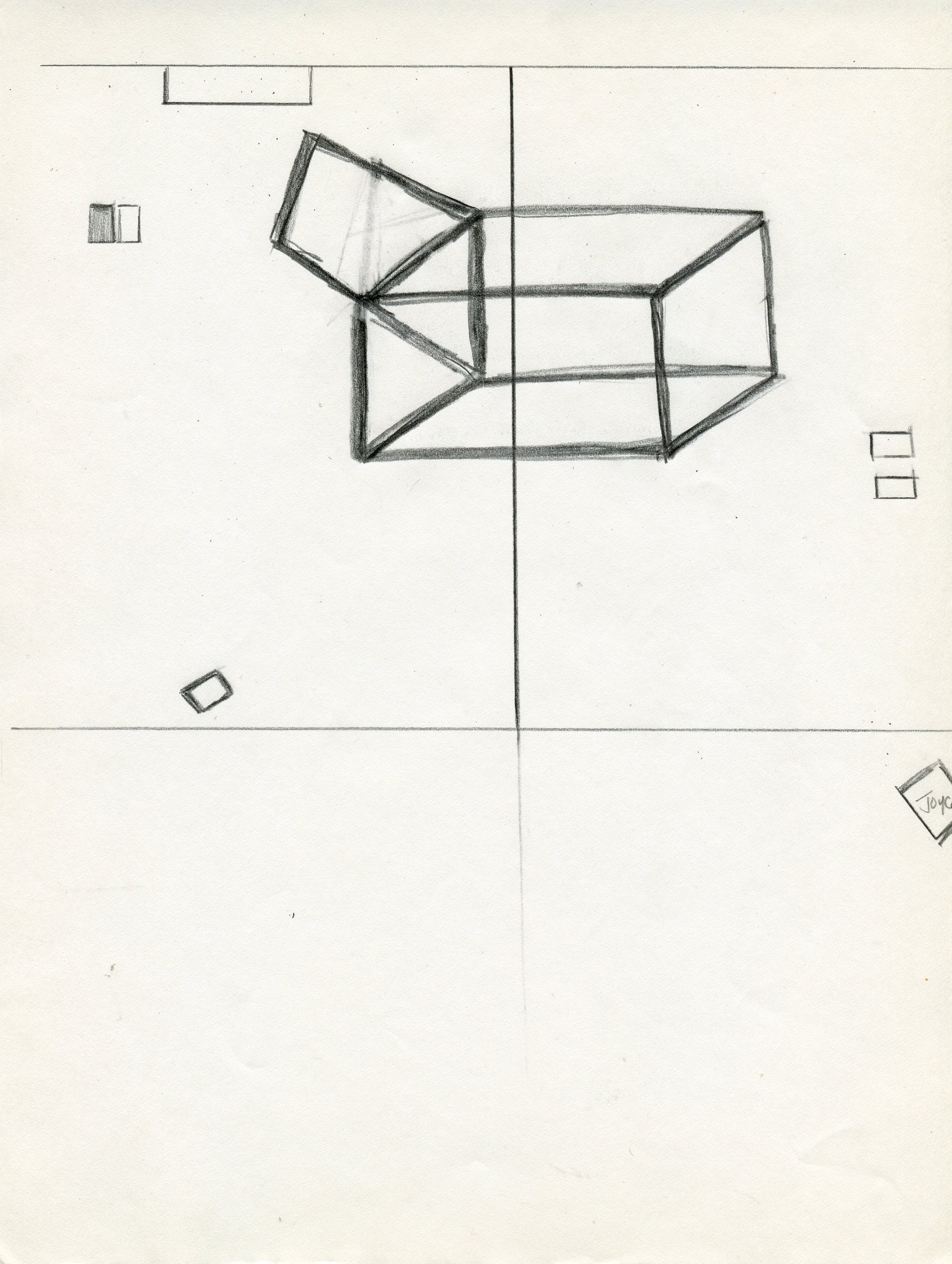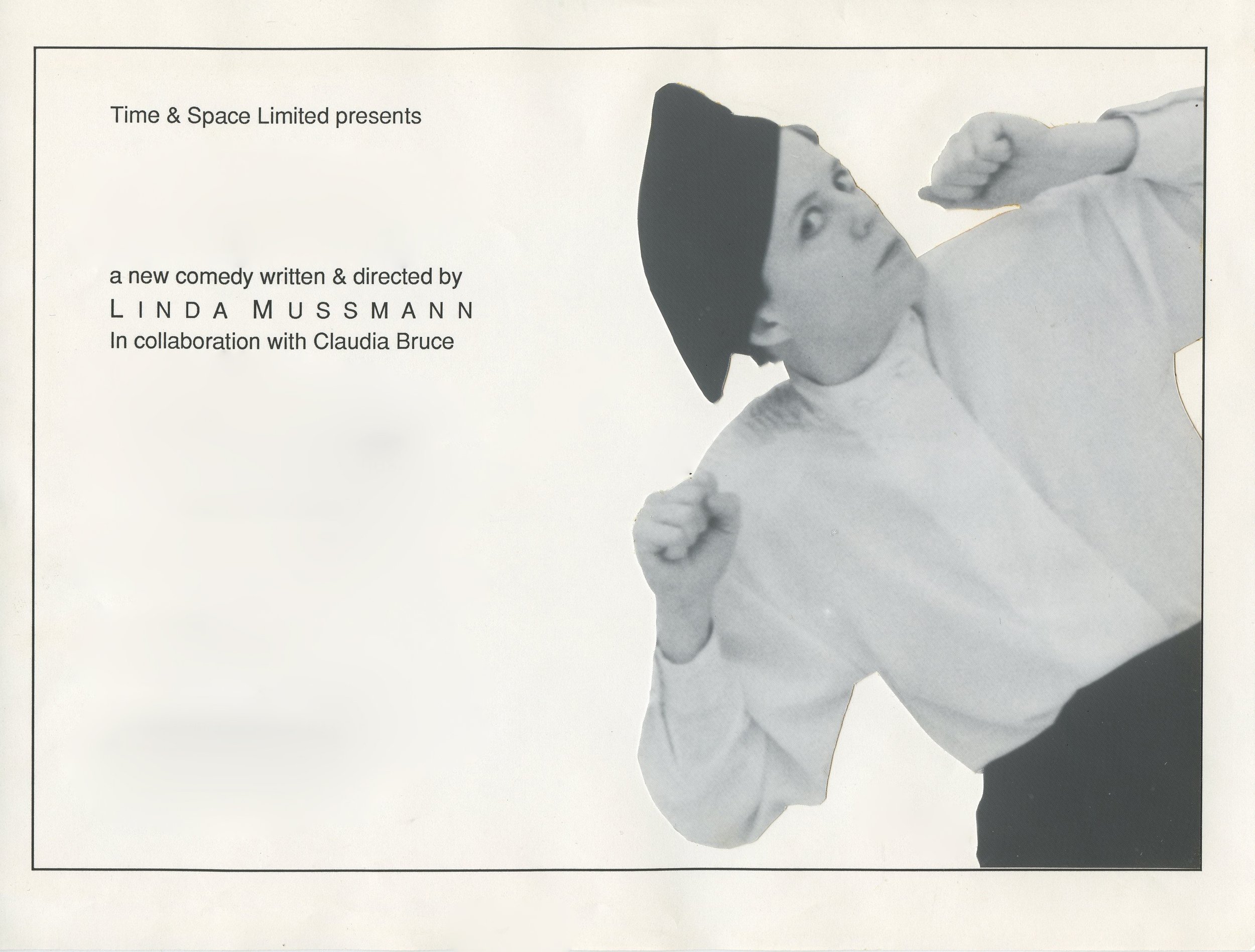
Little Stumps and Real Conversations
The first of three work loosely based on the real-life character of Clover Adams, LITTLE STUMPS & real conversations is a comedic escapade about intentions and perceptions - a geometric language puzzle, where 5 foreigners join Clover (Claudia Bruce) who travels through time and space - or rather thinks and talks about going - questioning the how, the who and the why.
Always on the move, Clover interacts with the others and the kinetic and multi-lingual exchanges that follow create a vibrant musical picture.
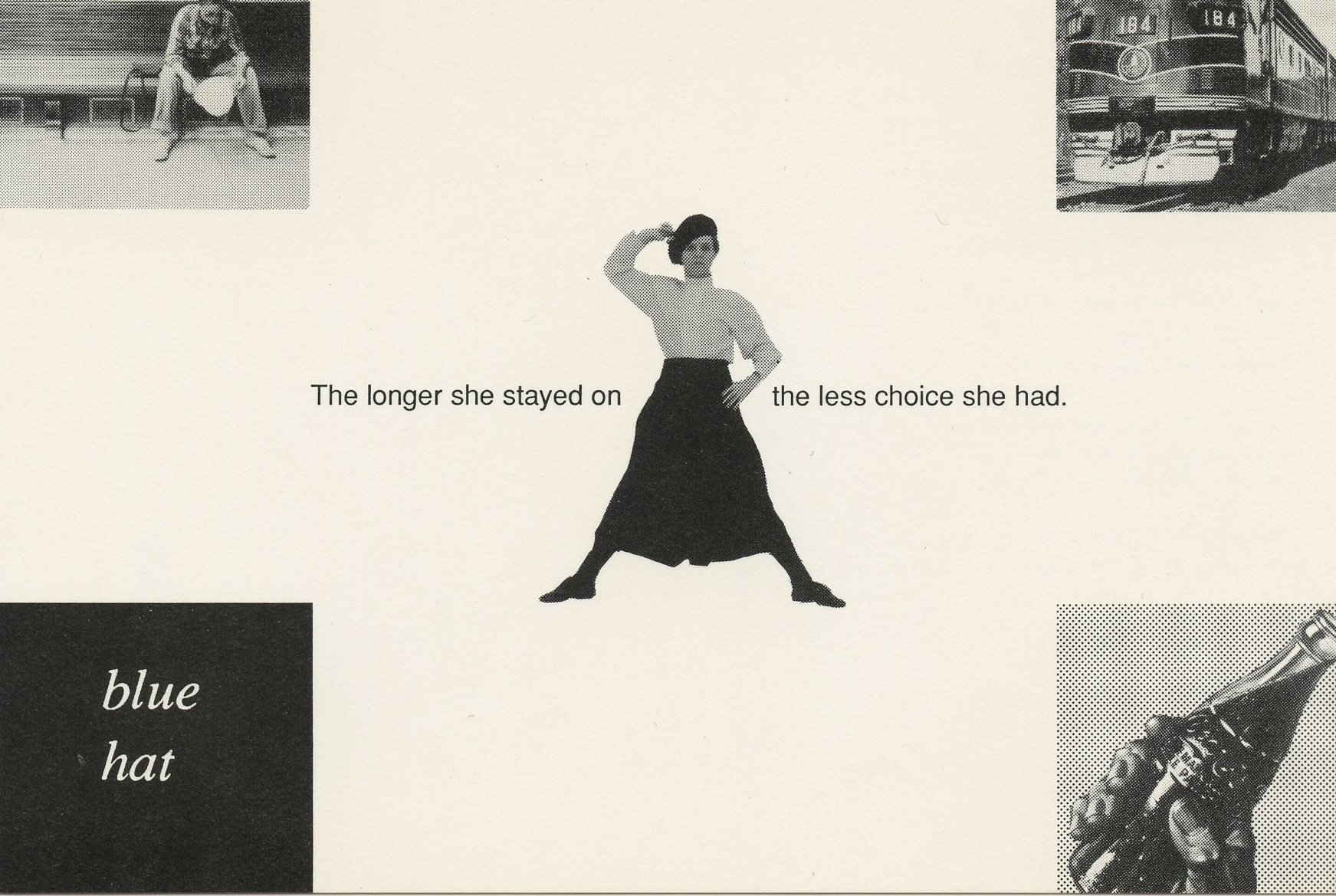
November 1989
Marymount Manhattan Theatre, New York, NY
written, designed, and directed by LINDA MUSSMANN
in collaboration with CLAUDIA BRUCE
performed by CATELINE ALTERAC, CLAUDIA BRUCE, SUSANNE HELMES, JIM HOWLEY, PHILIP SHEPARD, SERAFINA ROTONDI
stage manager and lighting technician: JOYCE BAKER
card design: DAVID FIGUEROA
Jack Anderson, The New York Times:
“Claudia Bruce portrayed a woman who, the dialogue and movement implied, wished to go to an unspecified place. Later, she was accused of a crime. After a trial, she shot herself, only to recover. Then she put on a blindfold as if she stood before a firing squad. The people who observed her included James Howley, who wondered where Ms. Bruce was going; Philip Shepherd, a natty fellow in knickers: Serafina Rotondi and Susanne Helmes, who spoke in foreign languages, and Cateline Alteirac, who played a haughty waiter who never served anything grander than Coca-Cola.”
Jack Anderson, The New York Times:
"The action involved searches for clues, conspiratorial pacings and mad chases. The performers sometimes adopted the stiffness of upper-class characters in British drawing-room comedies; at other times, they were as tense as suspects in a detective story…
Little Stumps and Real Conversations called attention to the way meanings may be hidden as well as conveyed by ordinary conversation. It also reminded us that posture, tone of voice and speech and body rhythms may provide clues to truths about human feelings. For Ms. Mussmann, people are always putting on an act - on stage and off.”
Downtown Magazine:
“The story centers on Clover, a foreigner in a foreign land. The multiple references to making connections at a train station do little to provide anything that might constitute "plot." A la Stein in her more obtuse performance vein, the emphasis is on the modernist's self-conscious pose. (“Excuse me for interrupting the performance,” exclaims one of the figures, “but the next part is too sad. We wish not to tell it.”)
The narrative thread is continually being fumbled or lost only to be picked up later at slightly different intersections, suggesting the importance Stein gave to alternative perspectives. The focus is rather on the rhythm revealed through accumulations of verbals and physical gestures the dance component presents the players as so many chess figures on a board.”
“What was the revolution about anyway?
Did anyone know? Did anyone care?
And did anything change?”
Audio Version
In 1989, Klaus Schöning of WDR Radio Cologne in Germany commissioned Linda Mussmann to adapt her original version of the Georg Büchner play Danton’s Death for a one hour broadcast. Thus began a period of experimentation in audio. Several Mussmann/Bruce productions from this era have radio play adaptations in addition to staged versions, including Lenz, MA.C.B.E.T.H., and Grief Has Taught Us Nothing.
The same year, Mussmann, Bruce, and the cast of Little Stumps independently recorded an audio version of the show, in the style of a radio play. This particular recording was not broadcast, but was sold on hand-copied audio tapes available at the TSL Storefront on West 22nd Street in Manhattan.
Linda Mussmann on adapting her work for the audio format:
“I think my interest in voice, and designs for the voice and music were a natural extension of the work---recording and sound were a big part of the work we did. The texts need music to support the lack of narrative, and the voice for me was always about a kind of speech song-- that evoked an emotion or a color on its own without relying on a duplication of what it already meant. I was always looking for a way to have two things happening at the same time that were not necessarily connected”



